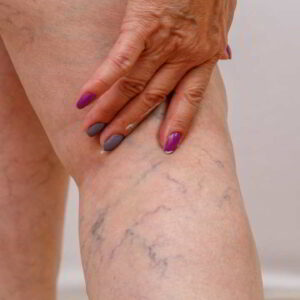Joint pain is a growing concern that affects millions worldwide. Whether caused by age, injury, or chronic conditions like arthritis, this discomfort can impact daily life, limit mobility, and reduce independence. In recent years, a new trend has emerged that’s changing how people manage their joint pain: Physiotherapy at Home in Dubai. This personalized approach offers a practical, effective, and convenient solution that’s gaining popularity fast. But what makes it so appealing?
The Rise of Home-Based Care
In today’s fast-paced world, time is a precious commodity. People are increasingly looking for ways to streamline their routines without compromising on quality of care. That’s where home-based physiotherapy fits perfectly. By bringing the treatment into the comfort of one’s living space, individuals no longer need to navigate traffic, wait in long queues, or interrupt their schedules for appointments. Instead, therapy sessions are tailored around their availability, making consistency in treatment easier to achieve.
For individuals struggling with joint pain, the idea of traveling to an unfamiliar place while in discomfort is unappealing. The simple ability to remain at home provides a level of comfort and emotional ease that traditional settings often lack. This comfort often translates to better focus during sessions and improved outcomes over time.
Personalized Attention in a Familiar Setting
One of the strongest reasons behind the shift toward Physiotherapy at home is the highly personalized attention patients receive. Unlike crowded or busy environments where sessions may feel rushed, home visits provide a focused one-on-one experience. Therapists are able to evaluate the patient’s home environment directly, making suggestions to improve mobility and safety.
Whether it’s guiding someone through joint-strengthening exercises in their own living room or recommending modifications to reduce strain on painful joints, the customized approach creates a meaningful difference. Every person’s joint pain is unique—and treating it in the setting where daily activities occur allows for more targeted and practical therapy.
Convenience That Encourages Commitment
One of the main challenges in any treatment plan is patient adherence. The more inconvenient a therapy is, the less likely it is to be followed regularly. That’s where the convenience of home sessions shines. Without the burden of traveling or rearranging multiple commitments, people are more inclined to stick to their therapy schedule. This consistency is essential for joint pain relief, especially for conditions that require long-term management.
Daily routines can be maintained, family members can be present for support, and flexibility allows for treatment to integrate smoothly into the person’s life. This ease removes common barriers that often lead to skipped sessions or abandoned care altogether.
Enhanced Emotional and Physical Well-Being
Physical therapy isn’t just about exercises—it’s also about building confidence and reducing fear. Many people with joint pain develop a hesitation to move freely due to concerns about worsening their condition. Receiving care in a familiar space eases anxiety and builds trust in the healing process.
The supportive atmosphere of home-based care enhances motivation. It also empowers individuals to perform functional activities that directly relate to their everyday lifestyle. For instance, someone recovering from a knee injury may benefit more by practicing walking up their actual stairs or moving safely around their kitchen. The realism of the setting adds emotional relevance to each activity.
Safe, Private, and Distraction-Free
Privacy is another major factor driving people to choose home-based physiotherapy. Not everyone feels comfortable doing stretches or mobility exercises in front of others. The home offers a safe space, especially for individuals who are self-conscious or recovering from surgery, injury, or illness.
The reduced distractions compared to busy environments ensure more efficient sessions. With undivided attention, therapists can make on-the-spot adjustments to techniques, correct postures, and better monitor progress. This level of care often leads to faster improvements in joint function and pain reduction.
Ideal for Elderly or Mobility-Challenged Individuals
Elderly individuals or those with limited mobility are among the biggest beneficiaries of this approach. For them, even short commutes can be stressful and painful. Physiotherapy at home eliminates that burden entirely, making treatment accessible without added strain.
Seniors often have multiple health conditions that require coordinated efforts. Being at home allows family members or caregivers to participate, support the therapy, and better understand how to assist the individual between sessions. It promotes holistic healing and long-term wellness in a way that’s difficult to replicate in clinical environments.
Real-Life Functionality Equals Real Results
Unlike generic programs, home-based therapy allows for real-time adaptations. For example, a therapist may notice how a person sits at their dining table, gets out of bed, or climbs the front steps. These day-to-day actions are often the source of discomfort, and minor tweaks in movement can make a significant difference.
Therapists can suggest assistive tools, correct improper postures, or recommend simple home exercises that blend naturally into daily routines. These highly specific adjustments help restore functionality faster and more effectively than isolated, out-of-context movements.
A Long-Term Solution for Sustainable Relief
The benefits of Physiotherapy at home aren’t just short-term. The habit-forming nature of home therapy makes it a sustainable option for managing chronic joint conditions. Instead of waiting for flare-ups to subside, people can incorporate regular sessions into their life to stay ahead of the pain.
This proactive approach shifts the focus from managing symptoms to enhancing mobility, strength, and independence. Over time, this leads to fewer interruptions in life, more confidence in movement, and a higher overall quality of living.
Conclusion: A Smart Choice for Modern Joint Care
With rising demands for flexibility, personalization, and comfort, it’s easy to see why more people are turning to Physiotherapy at Home Dubai. It aligns with modern lifestyles, eliminates unnecessary hurdles, and delivers real results in a setting that promotes healing. Joint pain may be common, but it doesn’t have to control your life. Home-based physiotherapy brings the solution right to your doorstep—empowering you to take back control, one session at a time.







